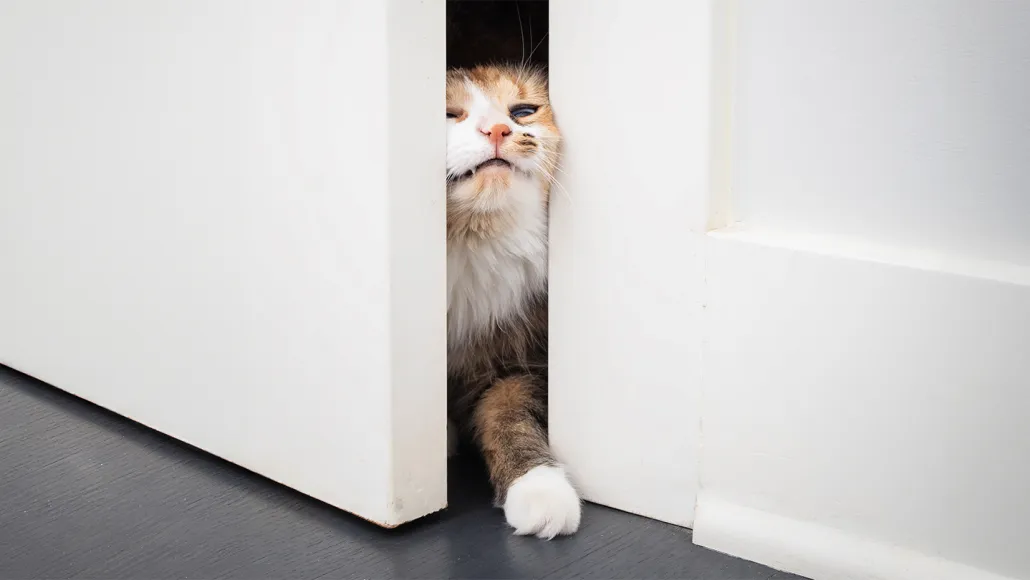Cats may appear solid, but their ability to squeeze into tight spaces has led some to liken them to a liquid. This idea gained traction in 2017 when a theoretical physics paper, inspired by viral videos of cats slipping under doors and squeezing into narrow crevices, explored their fluid-like behavior. Now, a researcher has taken this concept further, conducting hands-on tests with dozens of cats to determine when they act more like liquids or solids.
Biologist Péter Pongrácz from Eötvös Loránd University in Budapest shared new findings in iScience on September 17. He observed that while cats move with ease through tall, narrow spaces, they hesitate when faced with short, uncomfortable openings. This hesitation hints at cats being aware of their own body size and forming mental images of themselves. Pongrácz’s interest in self-awareness in animals stems from his earlier research with dogs, where he demonstrated that dogs can also assess their body size before navigating small spaces. In his 2019 study published in Animal Cognition, dogs slowed down and hesitated before moving through tight gaps, showcasing their spatial awareness. Pongrácz wondered, “What about cats?”
However, studying cats in a lab poses challenges. Unlike dogs, which are generally more cooperative, cats tend to be more independent and less comfortable in controlled settings. To overcome this, Pongrácz and his team devised a portable lab and visited 29 cat owners in Budapest. They created an experiment using two large cardboard panels attached to a doorframe, featuring holes of varying heights and widths. The goal was to see how cats squeezed from one side of the doorframe to the other, where their owner waited.
Getting cats to cooperate proved tricky. Unlike dogs, which respond well to commands, cats were harder to coax back into position. Once they slipped through a hole, some were reluctant to be picked up and reset for the next trial. Out of 38 cats, 30 completed the experiment. In trials with different hole heights, 22 cats hesitated when faced with the shortest openings, while in trials with different widths, only eight cats paused before navigating the narrowest spaces. Most of the cats attempted to squeeze through the smaller openings, seemingly relying on trial-and-error to find their way through.
Pongrácz speculates that this behavior might be linked to self-preservation in the wild. Cats could be cautious about squeezing into tight spaces where they can’t see the other side, protecting themselves from potential threats. Their hesitation in a familiar, safe environment suggests that they use a mental image of their body size to plan their movements.
Sridhar Ravi, an aerospace engineer from the University of New South Wales in Australia, praised Pongrácz’s study, likening it to his own research on bumblebees, which showed that even insects are aware of their body size. Ravi believes that cats’ behavior could vary based on motivation, like chasing prey, where hesitation might help avoid injury during quick movements. This aspect could have added an interesting dimension to the study, he notes.
Despite the difficulties, Pongrácz enjoyed the research process. Meeting the cats was entertaining, but he also found their owners’ reactions amusing. Some were certain their cats were geniuses, only for them to struggle with the task, while others thought their pets lacked intelligence—until the cats surprised them by completing the experiment with ease.
